Perennials That Pair Well With Hostas
Hostas have no trouble holding their own in a shady garden. Yet there are many other shade loving perennials that make excellent companions. By adding their own contrasting colors, shapes, heights and textures, these plants accentuate the simple elegance of the hosta's foliage. They can also add months of early season interest to your shade garden.

Hosta Companions to Extend the Season
Hostas are usually slow to emerge in the spring. Rather than waiting around for them to appear, you can use this as an opportunity to showcase spring bulbs and early-blooming perennials. In the garden shown above, hostas have barely begun to sprout. Yet there's already a tapestry of color and texture. By midsummer, most of these early season plants will have disappeared and hostas will be occupy about 75% of the space.
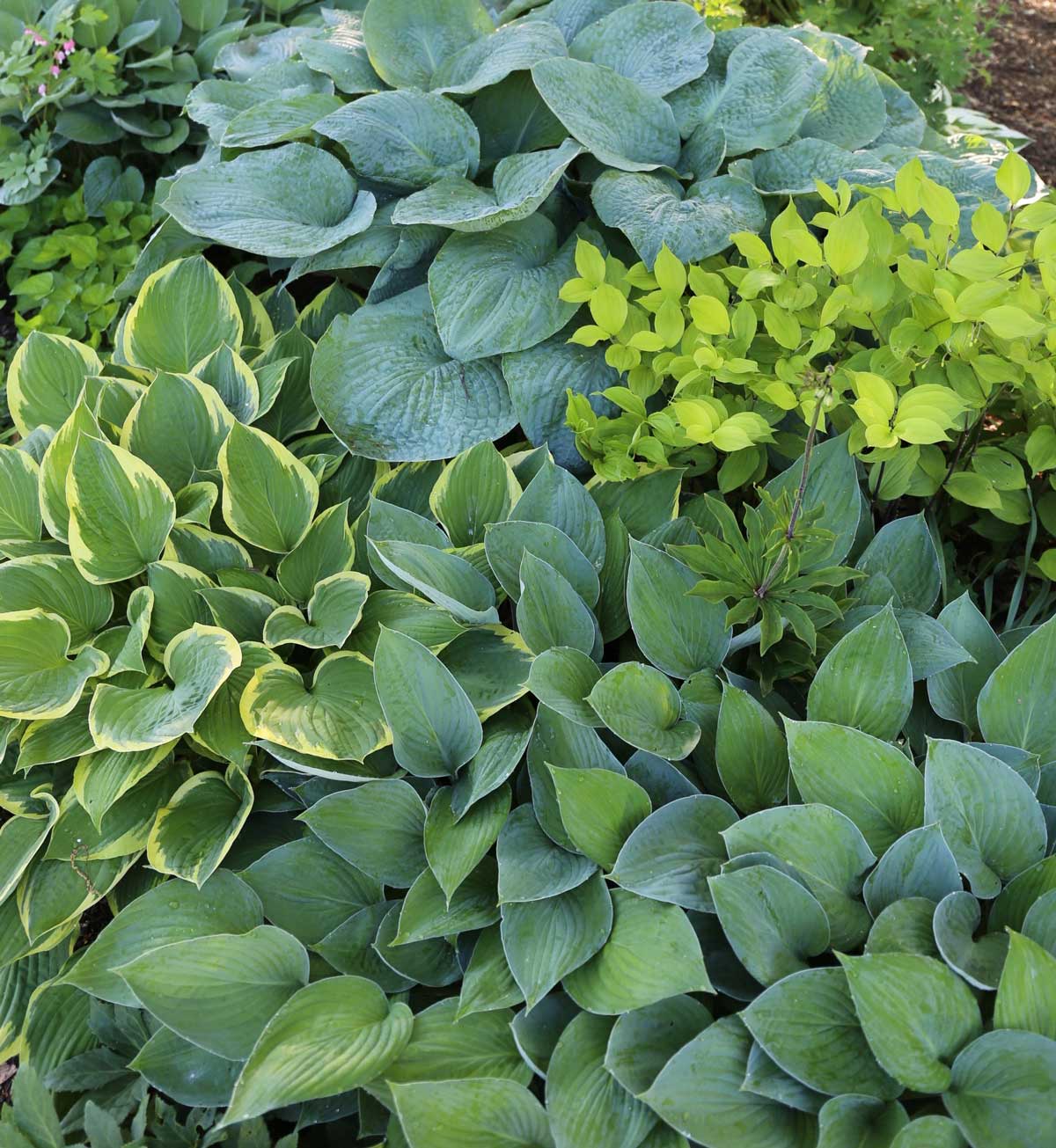
Add Diversity Without More Work
Pairing hostas with other low-maintenance perennials is an easy way to add variety and sophistication. So, if you are thinking about creating a new shade garden from scratch, or have an existing shade garden that could use a little spicing up, consider pairing hostas with some of these easy, shade-tolerant companion plants.

ALCHEMILLA (LADY’S MANTLE)
Velvety, spring-green leaves with zig-zag edges. Silvery hairs on the leaf surfaces turn water droplets into jewels. In early summer, lady's mantle produces large clusters of tiny chartreuse flowers that are excellent for cutting.

ASTILBE
Tidy, trouble-free plants with attractive, dark green foliage. Astilbe's showy, midsummer flowers have a fuzzy texture and colors range from white through pink, red and violet.

DICENTRA (BLEEDING HEART)
Dicentra spectablis emerges in early spring, and quickly grows into an impressive 3 to 4 foot plant. Shortly after the blossoms fade, the leaves die back to the ground and the plant disappears until the following spring. This gives neighboring hostas plenty of room to spread out.
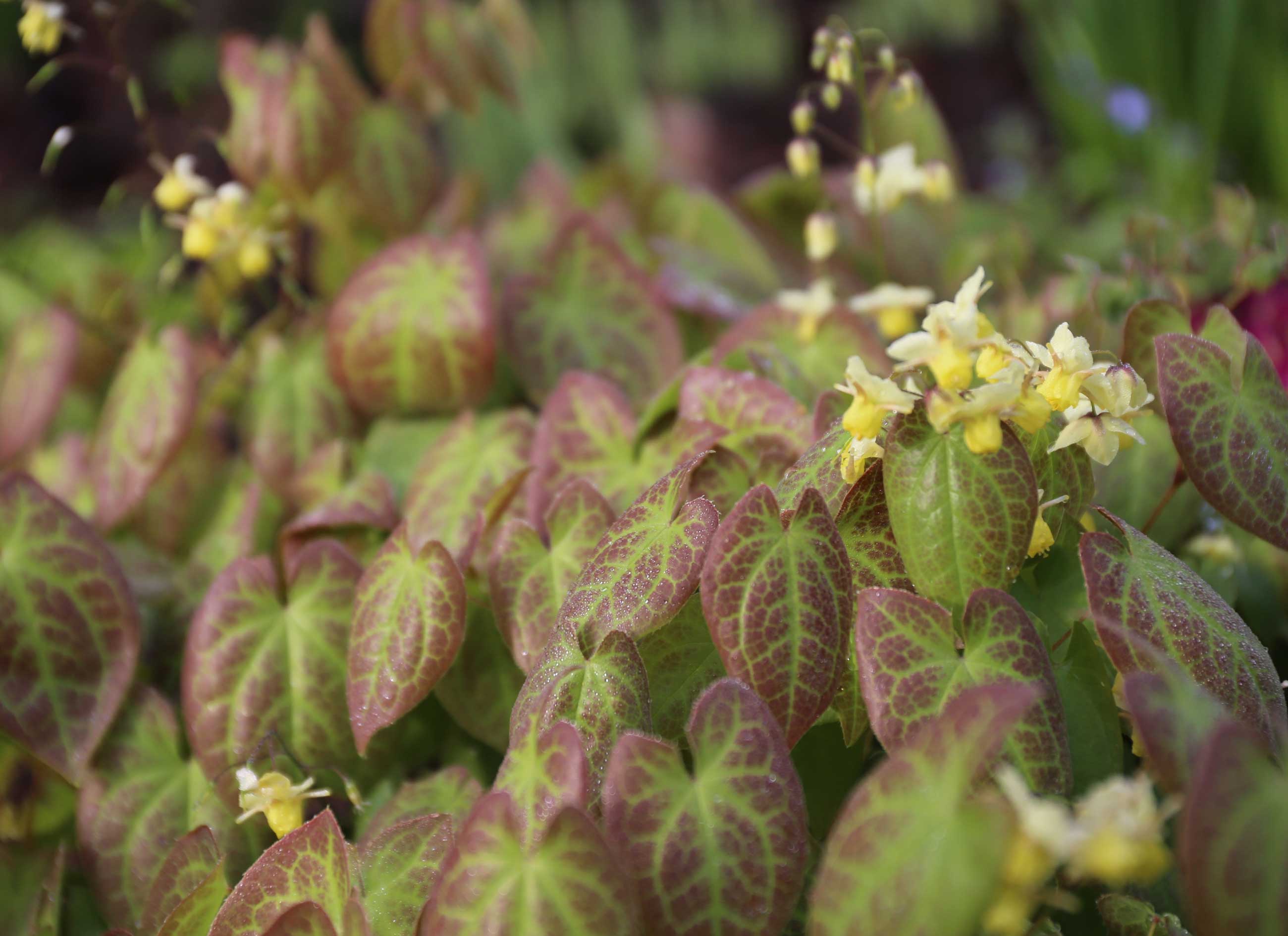
EPIMEDIUM (BARRENWORT)
Epimedium is another spring-blooming perennial that'ss happy to take center stage while hostas are still waking up. These plants have decorative heart-shaped foliage and delicate flower clusters in white, yellow, violet or pink.

EUPHORBIA (SPURGE)
The garden-worthy varieties of this plant have a neat, mounding habit. Their colorful foliage is usually far showier than their flowers. Foliage colors range from chocolate brown to burgundy, orange, blue-green and chartreuse. (Two varieties are shown above.)
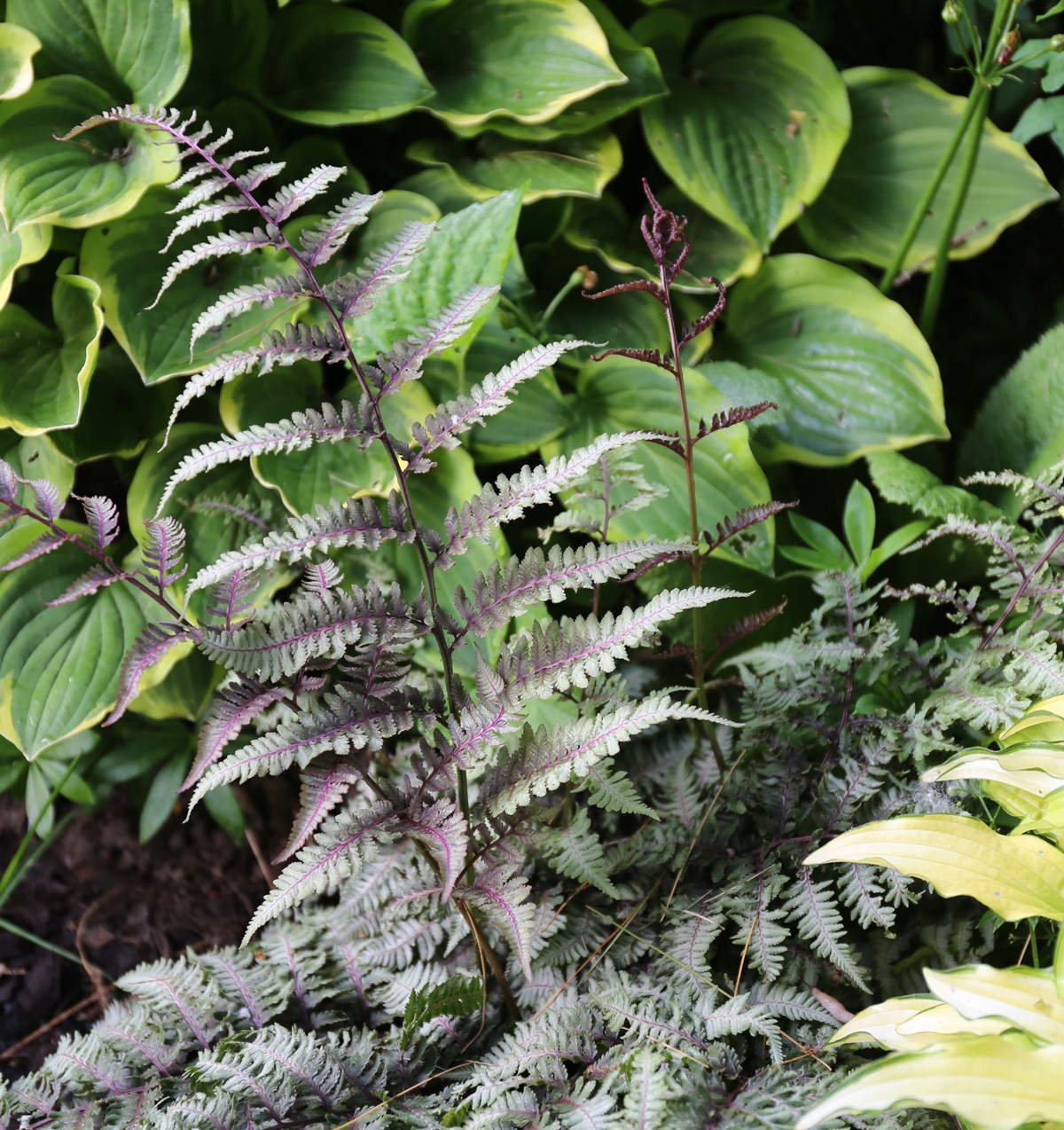
FERNS
Ferns are as easy to grow and as long-lived as hostas. Their graceful form and finely-textured foliage is the perfect counterpoint to the hosta’s broad leaves and bulkier stature.

PERENNIAL GERANIUMS
Perennial geraniums are among the toughest and most reliable perennials you can grow. Though they are usually planted in full sun, most varieties grow equally well in partial shade. The texture of their foliage has a lacy effect and the growth habit is loose and mounding. Flower colors vary from white and pale pink to lavender, blue, magenta and maroon. Most varieties of perennial geraniums will flower on and off from late spring through fall.
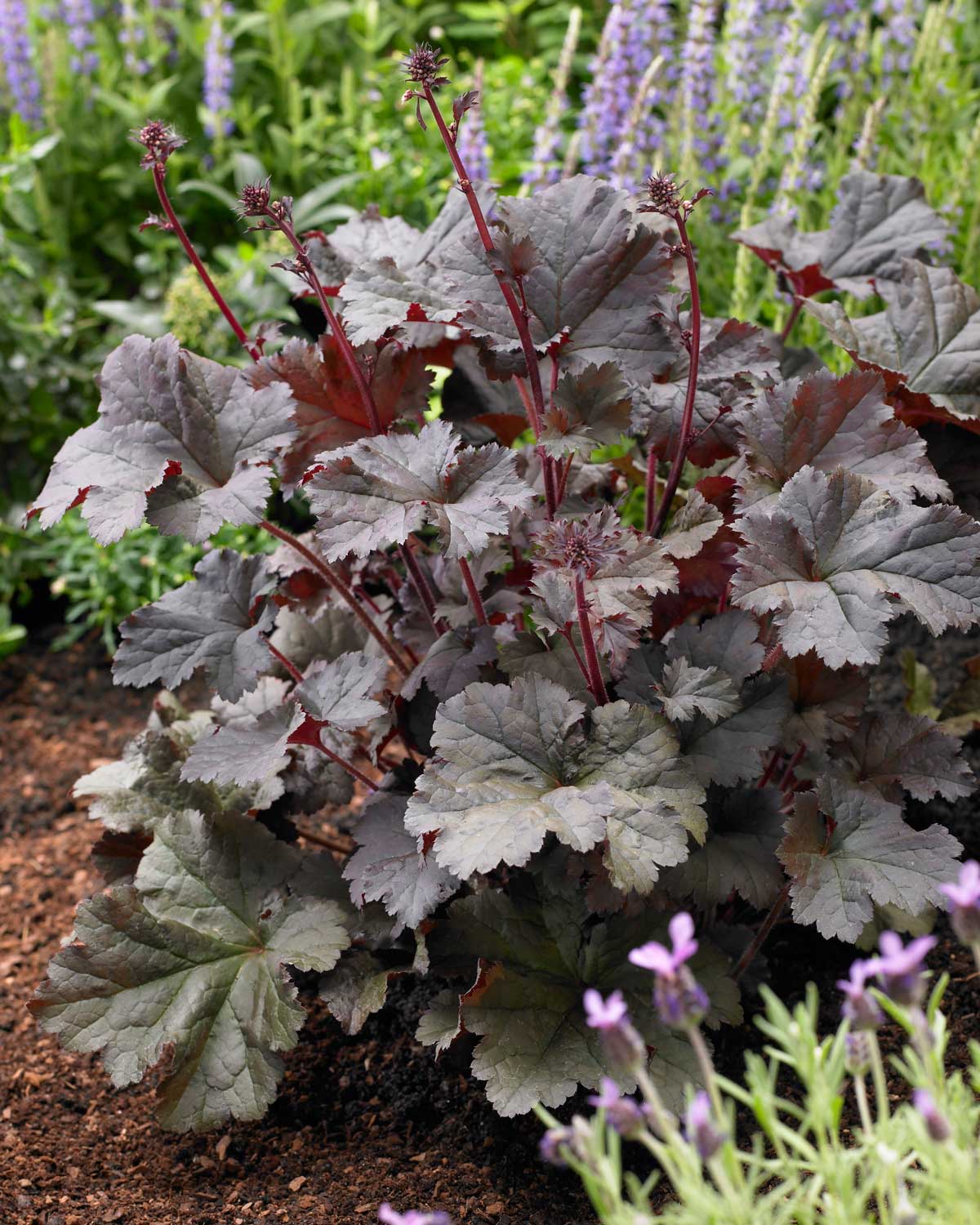
HEUCHERA (CORAL BELLS)
Heuchera is grown primarily for its decorative foliage. You can choose from dozens of different varieties, with leaf colors that range from shiny burgundy to coppery-orange and lime green. In addition to their beautiful foliage, heuchera also produce midsummer flowers that attract hummingbirds.

LAMIUM (SPOTTED DEAD NETTLE)
Lamium maculatum is a lovely ground cover for decorating the edge of your hosta garden. In addition to its silvery foliage, lamium also produces showy pink, purple or white flowers in late spring. There are many beautiful cultivars to choose from, such as 'White Nancy' and 'Purple Dragon.' Be aware that some types of lamium are aggressive growers and when planted in a place they like, can be difficult to control. To learn if that's a concern in your area, check the map here.
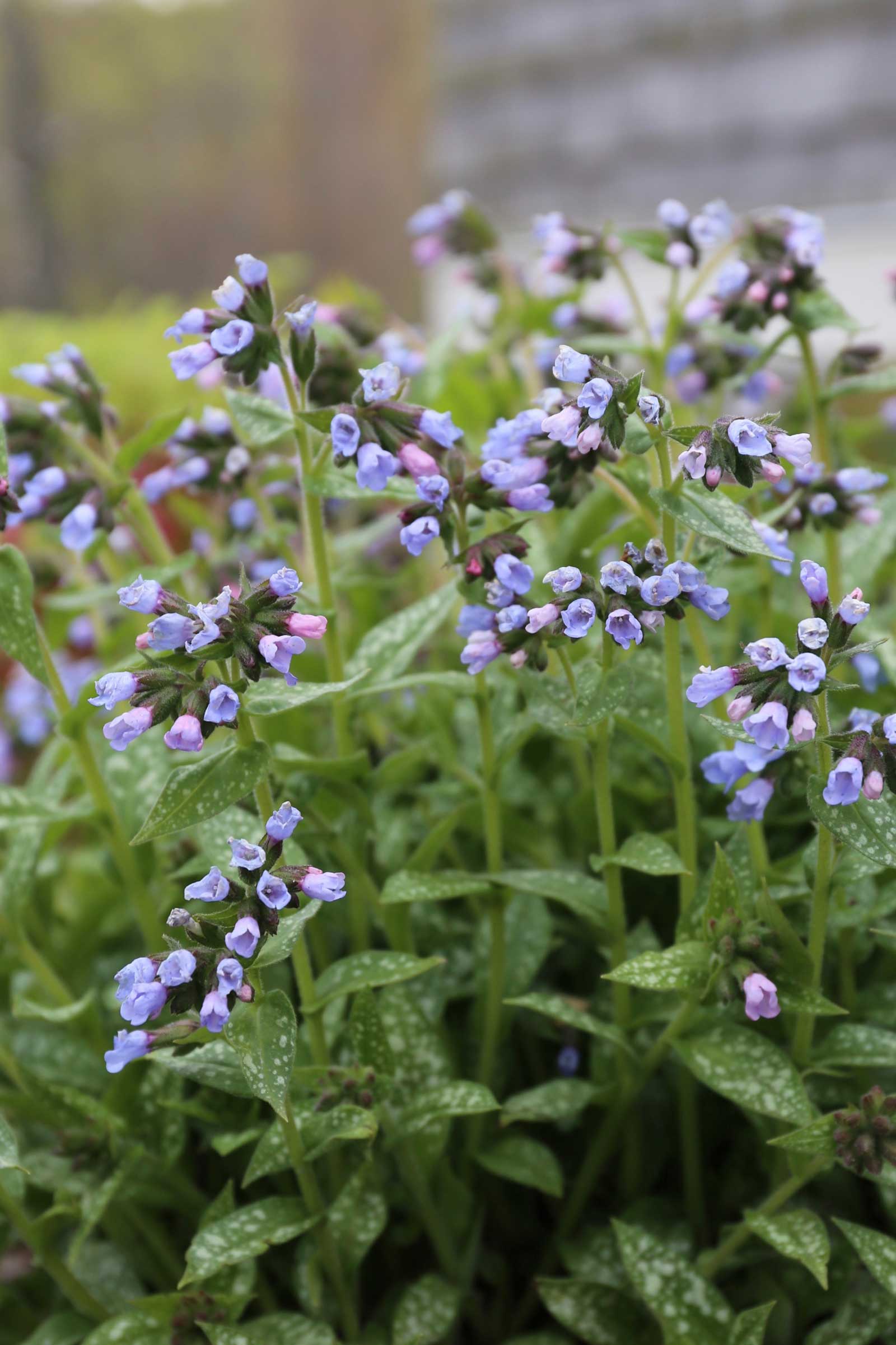
PULMONARIA (LUNGWORT)
Here is another shade-loving plant with lovely foliage. Lungwort's velvety, lance-shaped leaves are speckled with silvery-white spots. During late spring, the plants are covered with clusters of pink, blue or purple flowers, sometimes all on the same plant.

TIARELLA (FOAM FLOWER)
Tiarella is an endearing native plant with foliage that's similar to a heuchera, but not as flashy. It tolerates more heat and humidity than heucheras and this makes it a good choice for southern areas. The pale pink or creamy white bottle-brush flowers appear in late spring.

SPRING-FLOWERING BULBS
Spring bulbs are ideal companions for hostas. Eligible candidates include early-bloomers such as miniature daffodils, scilla, muscari and fritillaria. To stretch the season into early summer, consider adding alliums as well. When these spring bulbs finish blooming, the leaves of your hostas will quickly cover up the fading foliage.
We ship hostas and many of the other perennials mentioned in this article from March-May. You can see all of our shade-loving perennials HERE.
To learn more about shade-loving plants, you may be interested in reading: Choosing Plants for Sun or Shade, Design Tips for Shady Gardens, and 10 Easy Perennials for Shady Gardens.

